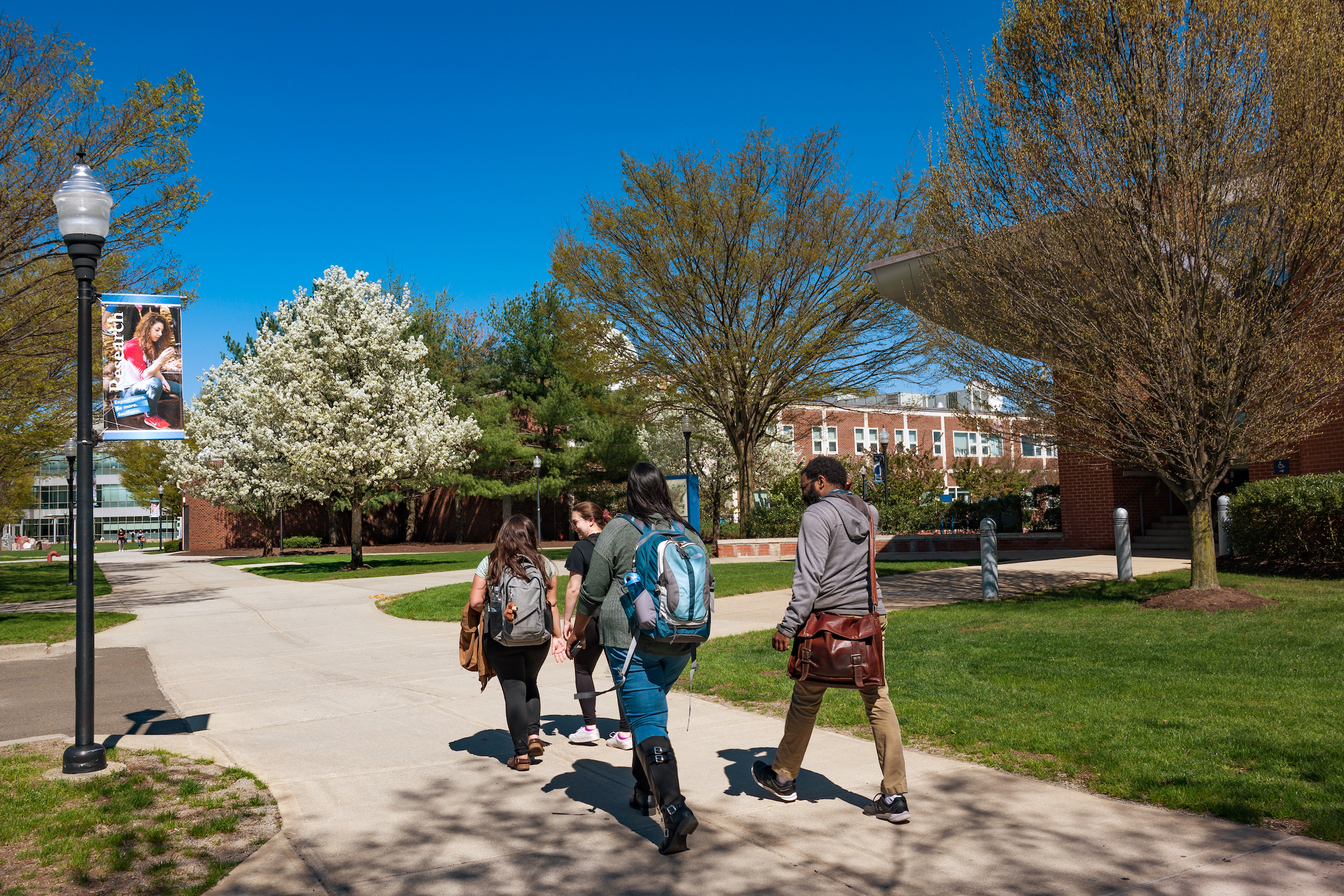One of the largest grant awards Southern has ever received will directly benefit students who face educational or economic disadvantages.
The five-year, $2.18 million federal grant from the U.S. Department of Education, through its Strengthening Institutions Program (SIP), was spearheaded by Kathleen De Oliveira, director of the university’s Academic Success Center.
De Oliveira’s grant submission, “Promoting Educational Retention through Collaborative High-Impact Services,” or PERCHS (an acronym that nods at Southern’s mascot, Otus the owl), proposes one overall goal: to increase the success and retention of promising students who face educational or economic disadvantages and who will thrive with additional support.
“The opportunities this creates for impact on our students is amazing,” Tracy Tyree, vice president for student affairs, said. “We are really focusing on what holds students back, and we recognize that we have to get down to a more granular, student-by-student level. One-on-one points of connection are important and successful ways to help students persist.”
Students who face educational or economic disadvantages — notoriously called at-risk — constitute a growing portion of Southern’s population. Close to 40 percent of Southern’s undergraduate class receive federal Pell Grants, the most popular federal grant given primarily to low-income undergraduate students. And nearly 30 percent of students are food insecure, according to Jules Tetreault, dean of student affairs.
When students balance multiple jobs, or they’re worried about where their next meal will come from, or they are underprepared and don’t understand concepts in class, that prevents them from thriving academically; the PERCHS award aims to support those students in a multi-pronged, multi-faceted, multi-divisional approach.
“Funding started October 2019, and we hit the ground running,” De Oliveira said. “It’s kind of like we’re first responders. Whatever students need, we either help them or refer them to the right place.”
Bolstering the offerings of the Southern Success Center is just one of the PERCHS program’s approaches. Currently, the center encompasses the Academic Success Center, First Year Experience (FYE), New Student and Sophomore Programs, Career Services, and Academic Advising. Students use the center as a centralized hub, minimizing room for error and frustration when seeking university services such as academic or career help.
“The idea is to have a central location for students instead of sending them to multiple stops around campus,” De Oliveira said. “And if you don’t know where to go, come here and we’ll help you.”
The PERCHS program has four distinct goals when it comes to the Success Center: decrease the percentage of students with grades of D, F or W in key gateway courses; increase persistence rates for first-time, full-time freshmen; decrease the percentage of the student body with an overall GPA of 2.5 or lower; and increase student satisfaction with support services.
Within the center, the current Peer Academic Leaders Program (PALS), will be expanded.
“PALS focuses on many gateway/foundational courses, particularly in STEM,” De Oliveira said. “Unlike tutoring, which can be sporadic, PALS helps students understand material on a week-by-week basis, and the grant helps us increase our number of PALS to almost 60. We’ve seen students improve as much as a grade level with consistent help. This takes students on the cusp of success and brings them to solid footing.”
The number of academic success coaches will increase as well.
“For students on academic probation who consistently meet with coaches, their retention rate is 70 percent,” De Oliveira said. “This grant lets us add more coaches and see how to use them most strategically.”
On a broader level, the PERCHS grant allows for the creation of an Opportunity Center, a physical space that will house a food pantry, and a full-time and part-time position to support it. Though the pantry will give students immediate access to food, the center also will connect students to various types of assistance they might need.
“There’s been a lot of talk about the cost of higher education, but it’s mostly been centered on tuition,” Tetreault said. “The reality is the expenses of rent, childcare, food and books is very high, and that aid is shrinking, and it’s left a big population who can’t meet their basic living needs. The idea is to use the Opportunity Center as a hub to support these pieces. Can we help them and refer them? It’s all about connection points. We are a culture of support and care. We want to provide our students with access and success.”
De Oliveira added that the distribution of funds over five years enables the university to explore all of the objectives and analyze the outcomes so key players can hone in on what is sustainable and keep it going.
“It’s about finding the right keys, all with the goal to help students,” she said.
Ultimately, the efforts benefit everyone.
“We’re paying attention to things that higher ed hasn’t usually paid attention to,” Tetreault said. “If a student gets a degree, they’re more likely to give back to their community, to make a million dollars more over their lifetime, and they’re less likely to rely on social services. We’re just providing the right mechanisms of support, so students are equipped to thrive.”


